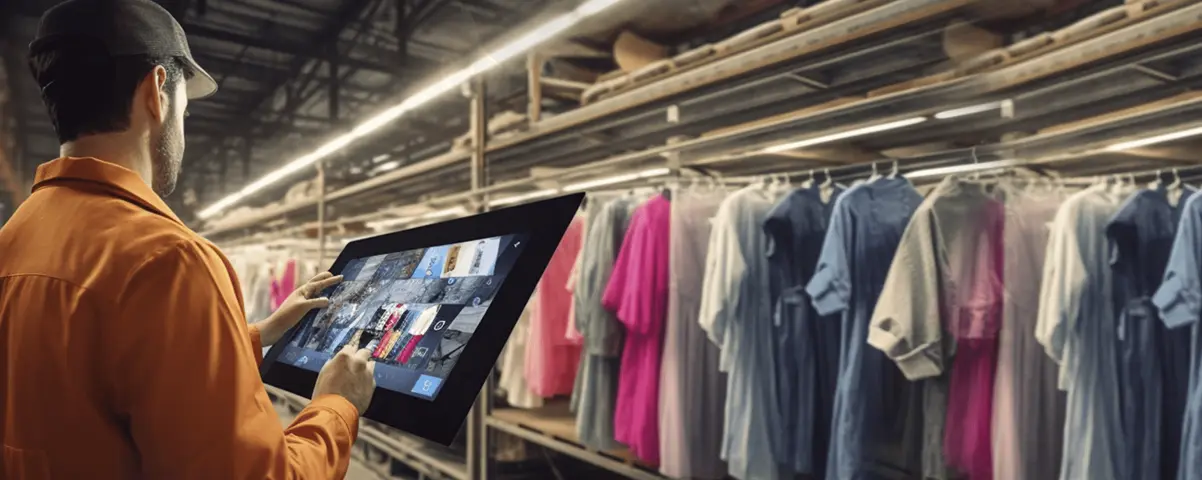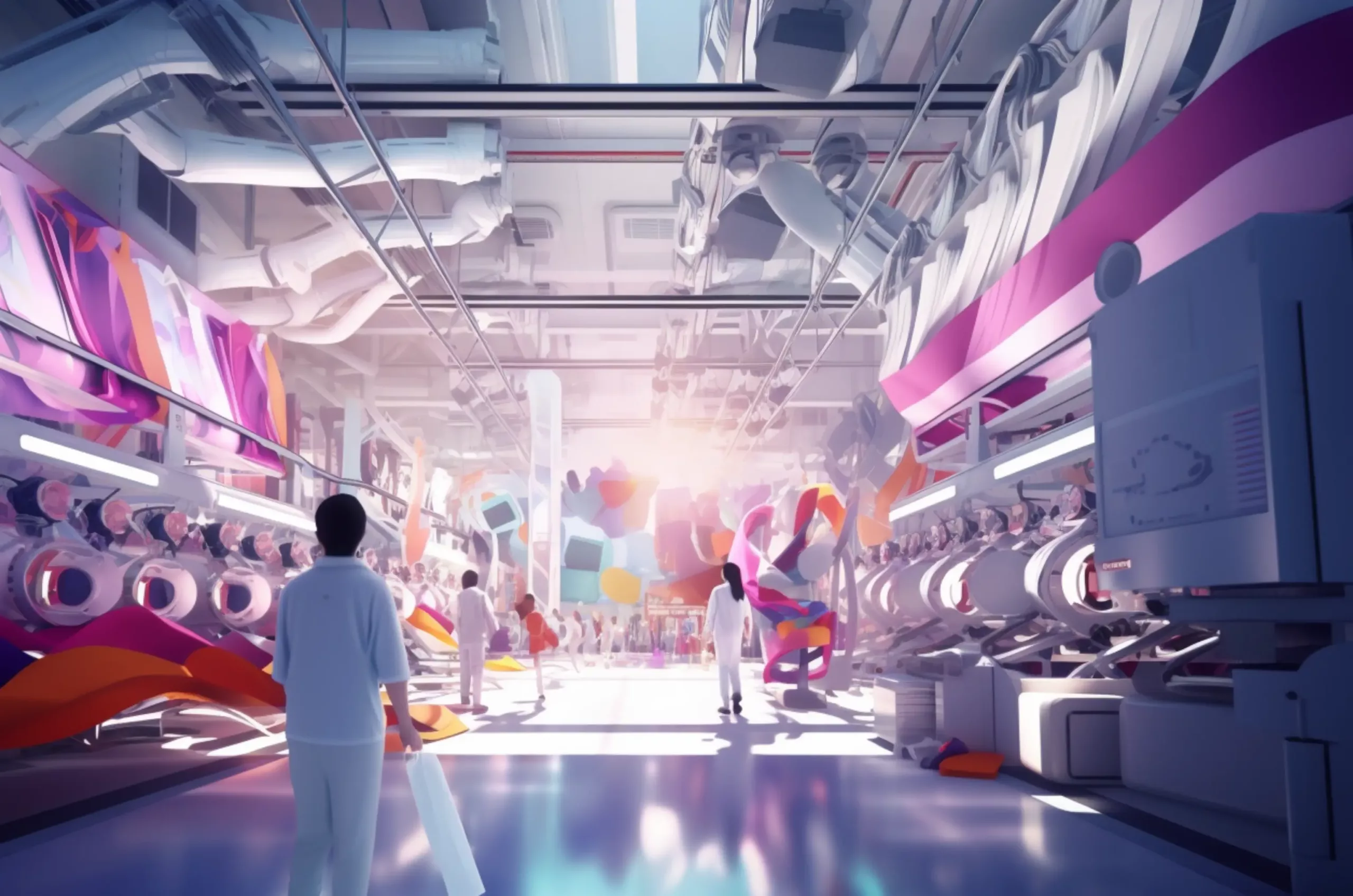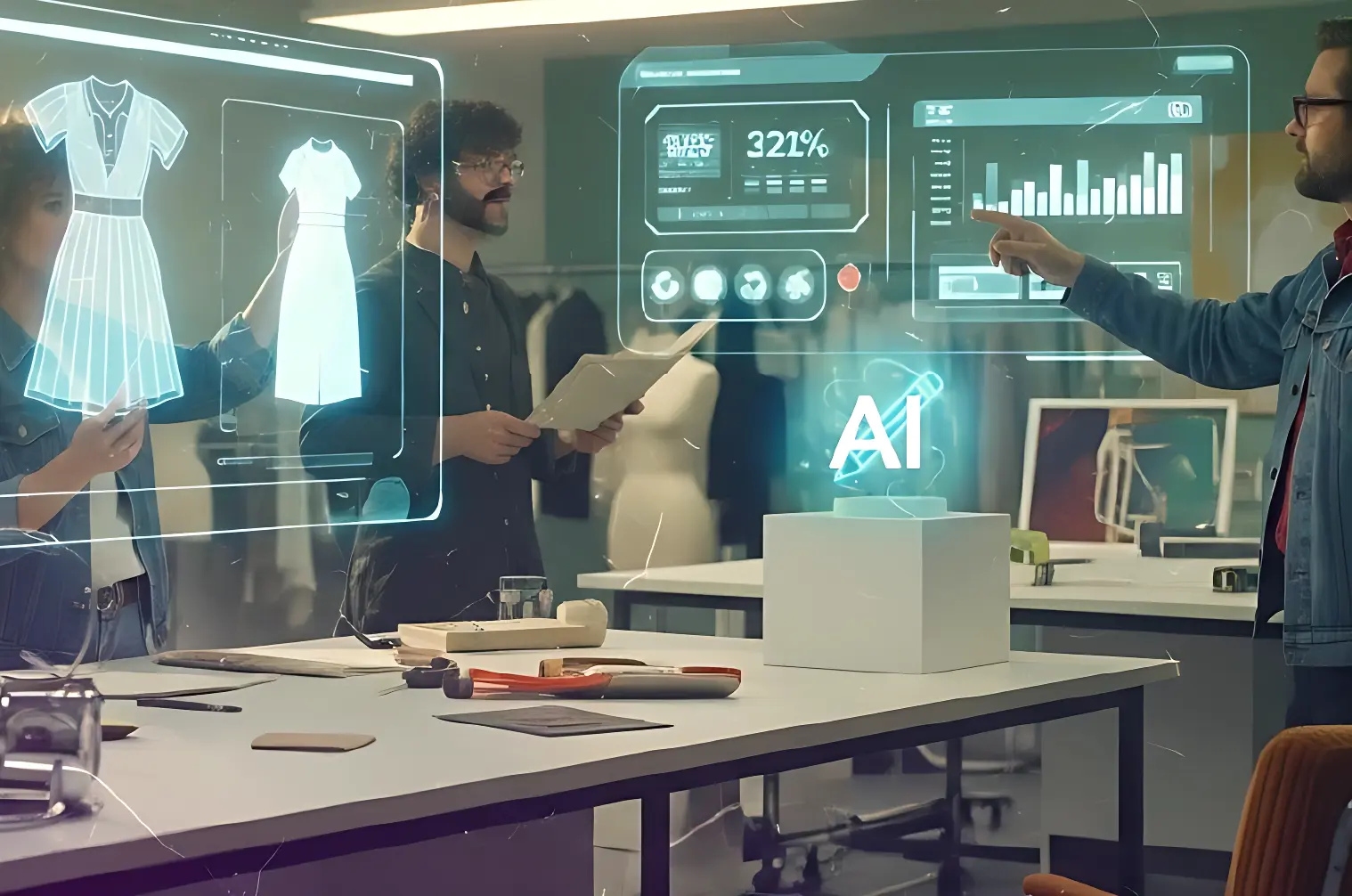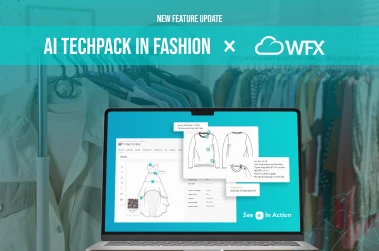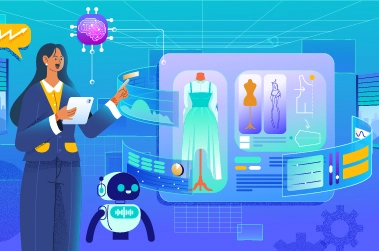Let’s examine how AI can revolutionize each of the abovementioned production processes, backed by relevant data and real-world examples:
1. Generative Design
The integration of AI in the design process has led to the emergence of generative design, a technique that utilizes machine learning algorithms to generate multiple design iterations based on specific input parameters. This not only accelerates the design process but also enables designers to explore a broader range of possibilities.
AI can enable customization and personalization of designs on a large scale. Customers can now have garments tailored to their specific measurements and preferences, with AI algorithms ensuring that each piece is crafted to perfection.
2. Pattern Making and Sampling
In the realm of pattern making and sampling, AI-powered software has transformed the way patterns are created and tested. By automating repetitive tasks and leveraging data-driven insights, these tools can significantly reduce human error and improve the overall accuracy of pattern making.
In fact, leading Computer Aided Design (CAD) software providers have developed advanced pattern making software that uses AI to optimize fabric utilization and generate precise patterns, resulting in reduced material waste and improved efficiency.
3. Digital Fashion Factories
Smart manufacturing, enabled by AI, has the potential to revolutionize the entire production process. Smart factories that incorporate AI-driven technologies such as robotics, computer vision, and machine learning can allow manufacturers to optimize production workflows, enhance quality control, and minimize downtime.
In some places, AI-powered robots and machines have started to replace traditional labor-intensive tasks. These advanced systems can work around the clock, significantly enhancing productivity and reducing waste. With AI’s ability to learn and improve over time, smart manufacturing is becoming more efficient and precise, resulting in higher quality products.
One interesting example which was possibly too ahead of its time was Adidas’ Speedfactory, a (now defunct) pilot project that utilizes AI-powered robots and 3D printing technology to produce customized footwear in record time.
4. Quality Control
Quality control and inspection is another critical area where AI can make a significant impact. Advanced inspection systems, powered by machine learning and computer vision, can detect defects and inconsistencies in real-time, ensuring that only high-quality products reach the end consumer.
AI algorithms can predict when a machine is likely to fail or require maintenance by analyzing data from sensors and historical maintenance records. This allows manufacturers to address potential issues before they become critical, minimizing downtime and increasing efficiency.
For example, the BMW Group harnesses automated image recognition to conduct quality checks and inspections, effectively eradicating pseudo-defects that deviate from target specifications without any actual faults. This implementation has enabled them to attain exceptional levels of manufacturing precision.
5. Predictive Machine Maintenance
Predictive maintenance, made possible by AI and data analytics, allows manufacturers to anticipate equipment failures and schedule maintenance proactively. This approach minimizes downtime, maximizes equipment life, and reduces overall maintenance costs.
A study by Deloitte revealed that predictive maintenance can reduce maintenance costs by 20–30% and increase equipment uptime by 10–20%.
6. Optimum Resource Utilization
AI plays a crucial role in optimizing enterprise resource management within the textile and garment industry. AI-powered demand forecasting tools can analyze historical sales data, market trends, and external factors to predict future demand with greater accuracy.
By analyzing production data and identifying patterns, AI algorithms can optimize energy consumption, reduce waste, and enhance overall operational efficiency.
For instance, Google used its DeepMind AI platform to optimize energy usage in its data centers, resulting in a 40% reduction in cooling costs.
7. Inventory Management
AI-driven inventory management systems can revolutionize the way businesses manage their supply chains. By leveraging machine learning algorithms to analyze historical sales data and predict future demand, these systems can help manufacturers avoid stockouts, reduce excess inventory, and optimize their production schedules.
One example of AI-powered inventory management in the fashion industry is the use of machine learning algorithms to analyze historical sales data, customer preferences, and trends to predict future demand and adjust inventory levels accordingly. Fast-fashion retailers like H&M and Zara use AI to optimize their supply chains and manage inventory more effectively
In conclusion, the potential of artificial intelligence in the apparel and textile manufacturing industry is vast and multifaceted. As we continue to explore the full potential of AI in this industry, the possibilities are truly endless but how can you make the most of it?

































